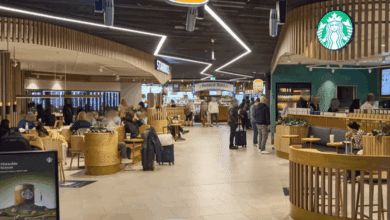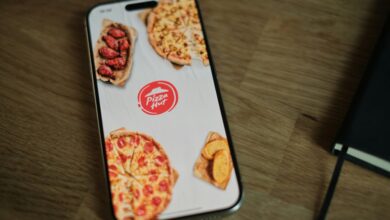Mastering personalisation in the fast food industry
By Harry Hanson-Smith, the regional vice president at Dynamic Yield by Mastercard

Register to get 1 free article
Reveal the article below by registering for our email newsletter.
Want unlimited access? View Plans
Already have an account? Sign in
The UK’s 2,256 drive-thrus took in £2.9bn from 2021-22, and drove £500m more sales compared with the year before, according to research by the NPD Group. Last year, the fast food and takeaway industry in the UK amounted to a whopping £21bn, up from the previous year’s approximate £20bn.
This momentous growth has catalysed a profound digital shift within the industry. Most chains have embraced advanced mobile and online ordering systems, with a growing number digitising their drive-thrus. These advancements not only streamline operations but also offer unparalleled convenience and efficiency for both consumers and restaurants alike.
With this in mind, here are the significant opportunities for fast food restaurants to enhance their offerings through personalised customer experiences. In a data-rich environment, the key question arises: How can the fast food industry leverage this wealth of data to cultivate loyalty and optimise profitability?
Unleashing the power of fast food data
Fast food restaurants generate heaps of data daily. By leveraging contextual factors such as location, weather, popularity, time of day, and existing order items, they can put the data to work, strengthening customer connections and improving customer experience.
Influential areas for personalisation
The shift towards online channels – such as mobile apps, mobile webs and desktop personalisation – accelerated by the pandemic, remains a pivotal focus for the fast food industry. Fast food restaurants can enhance the online customer experience by:
- Improving ordering with real-time personalised recommendations: fast food restaurants can harness the insights from their customers’ loyalty programmes to highlight special promotions and tailor messages according to their preferences or dietary choices. Additionally, they can extend personalised suggestions to new customers by leveraging location-specific data. By understanding what each consumer values through their demonstrated affinity, these restaurants can create more tailored experiences that resonate with their customers on a deeper level.
- Improve customer experience with optimised order timing: Fast food restaurants can enhance order-timing workflows by using personalisation technology. For example, they can use location data to prepare orders as customers approach the restaurant, ensuring efficient and convenient service. Importantly, this approach is only activated when the consumers opt-in for their data to be used in this way, respecting their preferences.
An entirely personalised approach
A tailored approach benefits both restaurants and customers alike. By implementing personalised strategies through the right operating system, restaurants can cater to individual preferences seamlessly. For instance, imagine a vegetarian customer using a fast food mobile app during lunch on a scorching summer day. Not only will they discover a homepage tailored to veg-friendly lunch choices, but they will also see refreshing cold drinks prominently featured. Opting for in-store pick-up unlocks additional perks, like receiving recommendations for ice cream, previously unavailable for delivery. Leveraging location-specific data, the app accurately estimates when the order will be prepared, ensuring a seamless and satisfying experience for the customer while optimising efficiency for the restaurant.
In-store and drive-thru personalisation
With the adoption of digital menu boards and self-serve kiosks, in-store and drive-thru experiences offer new frontiers for personalisation by:
- Influencing real-time order behaviour with upsell and cross-sell opportunities: Restaurants can employ dynamic menus and kiosks to highlight relevant products or leverage suggestive selling to complement a customer’s cart – simultaneously on the same screen.
- Driving loyalty by converting anonymous visitors to loyal customers: Restaurants can use digital signage via the menu or ordering kiosks to prompt loyalty members to input their information without disrupting the person-to-person interaction. For those who haven’t already joined a loyalty programme, restaurants can use these customer touchpoints to highlight loyalty points for each item or transaction that could be redeemed upon sign-up, or offer a deal in real-time to those who download the app.
Optimising each channel and experience with advanced deep learning
While deep learning-based recommendations are becoming standard, fast food establishments can fine-tune these algorithms to understand specific nuances found only in the restaurant industry.
The right fast food personalisation platform will review every check that a product was included in to understand its impact against various KPIs (e.g. bill size, revenue, etc.) as well as across channels, allowing teams to set a realistic baseline for performance.
The omnichannel opportunity
Customers experience a brand in one way – they don’t see it as ‘online’ or ‘in-store.’ The opportunity for fast food restaurants, therefore, is to not only imbue each channel’s unique features with personalisation, but also use them to connect and inform subsequent experiences across channels. Fast food establishments can leverage cross-channel data to deliver a cohesive, omnichannel customer journey – one where the user’s drive-thru order impacts the experience, content, and messaging they see the next time they open the mobile app and vice versa.







